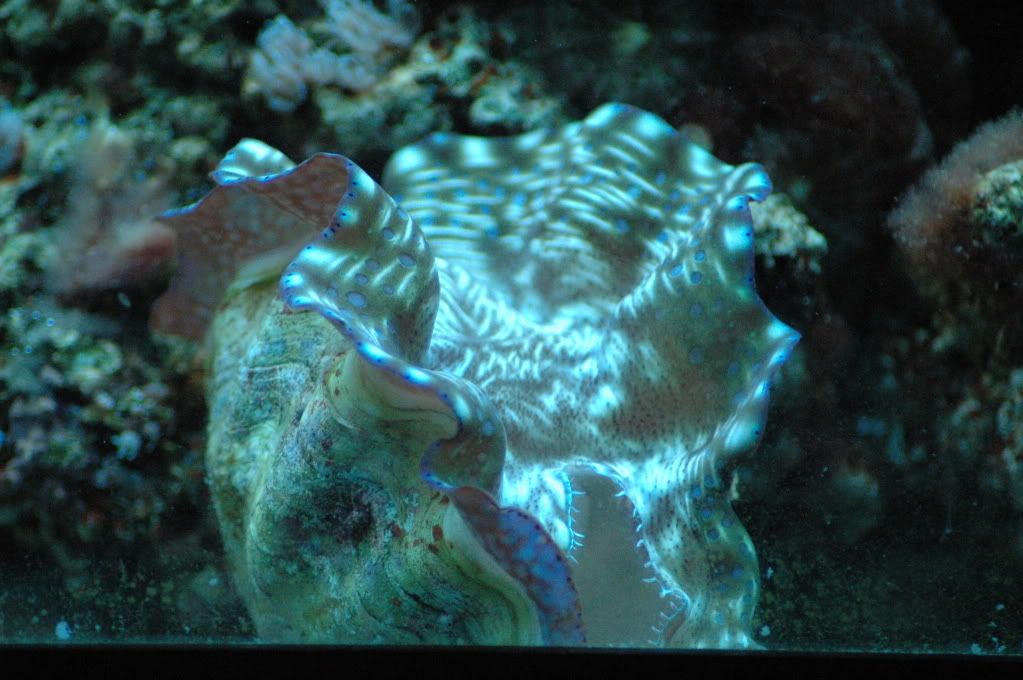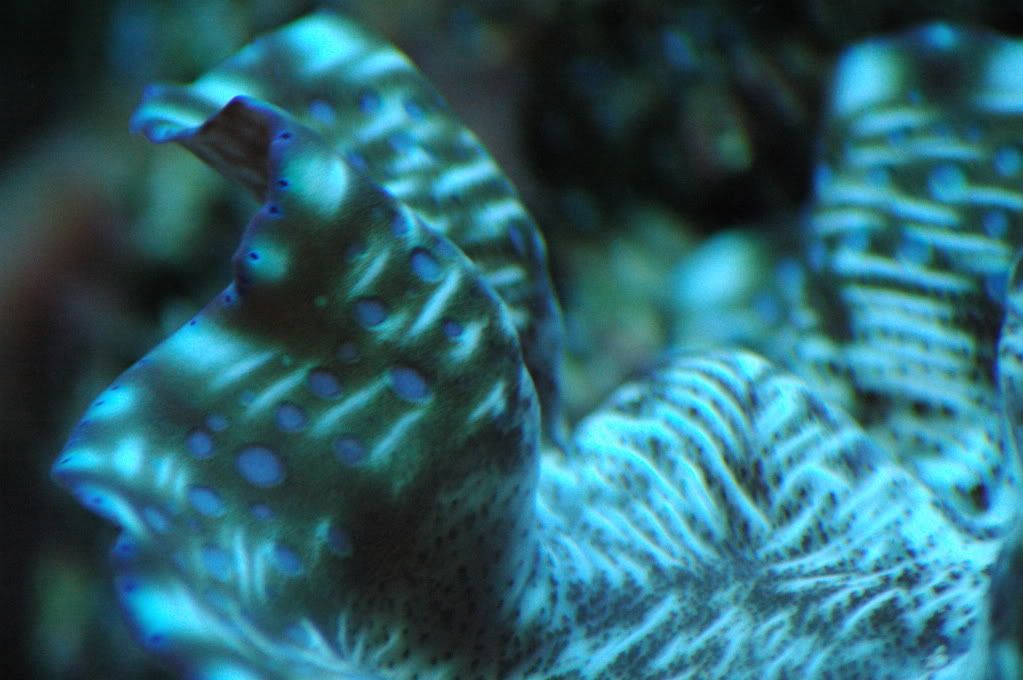You are using an out of date browser. It may not display this or other websites correctly.
You should upgrade or use an alternative browser.
You should upgrade or use an alternative browser.
What type of clam do I own?
- Thread starter jnohs
- Start date
Sorry, I didn't mean to come off blunt.
Maybe this is the response you were looking for:
Nice clam! It is called a "Tridacna derasa". The Derasa Clam is also referred to as the Southern Giant Clam or Smooth Giant Clam. The latter name refers to the relative lack of ribbing and scales on the shell. The smoothness of its thick shell, and the 6-7 vertical folds helps to differentiate its species from T. gigas, its larger relative which is not as smooth and has 4-5 folds. In an aquarium, however, scutes may develop on the Deresa Clam. Its mantle is a mixture of orange, yellow, blue, and black and white, and usually has a wavy striped or spotted pattern, usually with vivid blues and greens. It has a narrow byssal opening and the incurrent siphon has tentacles. This species is one of the largest of the "giant" clams, and grows rapidly, reaching a maximum size of approximately 20 inches. Under the proper conditions, smaller Derasa Clams can double or triple their size in less than a year. Those in the aquarium trade are usually cultured.
The Derasa Clam is the most widely available and hardy of the Tridacna clams. It needs bright lighting supplied by intense flourescent or metal halide lamps to live, grow, and keep its bright colors. The type of lamp will depend on the depth of the tank and the position of the clam. A daylight fluorescent tube is also recommended. The Deresa Clam requires calcium levels of 400-480 mg/L, and an alkalinity of 7 to 12 degrees. Proper levels of strontium and iodine are also needed.
The Deresa Clam relies heavily on the photosynthesis of the zooxanthellae cells growing in its mantle. However, all clams also require micro foods designed for filter feeders, especially when small. Offer phytoplankton and other micro-foods.
Maybe this is the response you were looking for:
Nice clam! It is called a "Tridacna derasa". The Derasa Clam is also referred to as the Southern Giant Clam or Smooth Giant Clam. The latter name refers to the relative lack of ribbing and scales on the shell. The smoothness of its thick shell, and the 6-7 vertical folds helps to differentiate its species from T. gigas, its larger relative which is not as smooth and has 4-5 folds. In an aquarium, however, scutes may develop on the Deresa Clam. Its mantle is a mixture of orange, yellow, blue, and black and white, and usually has a wavy striped or spotted pattern, usually with vivid blues and greens. It has a narrow byssal opening and the incurrent siphon has tentacles. This species is one of the largest of the "giant" clams, and grows rapidly, reaching a maximum size of approximately 20 inches. Under the proper conditions, smaller Derasa Clams can double or triple their size in less than a year. Those in the aquarium trade are usually cultured.
The Derasa Clam is the most widely available and hardy of the Tridacna clams. It needs bright lighting supplied by intense flourescent or metal halide lamps to live, grow, and keep its bright colors. The type of lamp will depend on the depth of the tank and the position of the clam. A daylight fluorescent tube is also recommended. The Deresa Clam requires calcium levels of 400-480 mg/L, and an alkalinity of 7 to 12 degrees. Proper levels of strontium and iodine are also needed.
The Deresa Clam relies heavily on the photosynthesis of the zooxanthellae cells growing in its mantle. However, all clams also require micro foods designed for filter feeders, especially when small. Offer phytoplankton and other micro-foods.
Wow,
I learn something new every day. Usually about how much I don't know!! LOL. Nice write up Frankie. Didn't know about the micro foods.
Gotta love google



